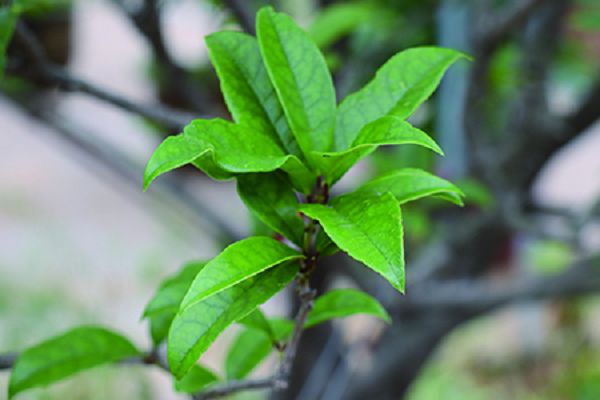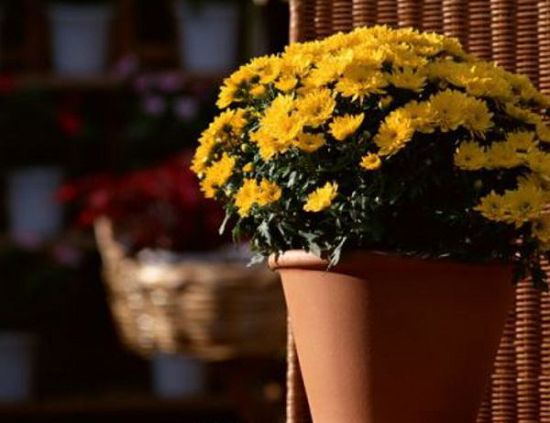Culture Management of potted Flowers in Autumn
For potted flowers, autumn management is particularly important, because the autumn climate changes from hot summer to cool gradually, and potted flowers are likely to wither and wither because they are unable to adapt to the sudden change of climate. Therefore, potted flower management should pay attention to the following management work.
1. Key points for the conservation of potted flowers in autumn
1. Some light-loving woody flowers that bloom in summer, such as jasmine, Fusang, Jiuli incense, etc., should still be placed in a sunny place, so that the plants can fully receive light, so that the leaves can better carry out photosynthesis and provide nutrients in time, so as to promote the maturity of branches in the current year, so that they can survive the winter safely, and ensure that flowers and leaves flourish in the following year. Potted flowers such as rhododendron, magnolia, cyclamen, poinsettia and crab claw orchid that bloom before and after the Spring Festival should also be placed in a sunny place and receive full sunshine, otherwise the flowering period will be delayed or even will not bloom. Generally, foliage plants are more shade-tolerant and can provide some light appropriately to avoid direct light at noon.
two。 Water and fertilizer appropriate flowers began to control the amount of water in early October, stop fertilization, so as not to water more rotten roots, fertilizer caused branches and leaves to grow, affecting overwintering. Flowers that bloom before and after the Spring Festival, such as cyclamen, orchid, crab claw orchid, rhododendron, etc., have passed the dormant period and began to enter the peak growing season, so the management of fertilizer and water should be strengthened from autumn to Spring Festival, and appropriate application of phosphorus and potassium fertilizer can be added to facilitate the formation of flower buds.
3. In addition to the flowers that bloom in early spring, most flowers, such as jasmine, crape myrtle and pomegranate, can be pruned and shaped in autumn, which can reduce the consumption of nutrients in winter and increase the number of potted flowers in the following year. Remove diseased branches, withered branches, over-dense branches and overgrown branches when pruning, so as to lay a good foundation for potted flowers to survive the winter.
4. Some biennial flowers, such as pansy, carnation, melon and leaf chrysanthemum, hollyhock, etc., are good time to sow seeds. Pay attention to spraying water after sowing to keep the soil moist. There are some woody flowers suitable for cutting in autumn, such as rose, geranium, jasmine, etc., with a higher survival rate in autumn. Perennial root flowers that need ramets for dense growth, such as peony and peony, should be propagated in time. Flowers that bloom before and after the Spring Festival, such as hyacinth, tulips, Zhu Dinghong, etc., should be put on the pot as soon as possible.
5. The time of entering the house in time for potted flowers can vary according to different flowers. Fusang, poinsettia, begonia, cyclamen, jasmine, colourful leaf grass, tortoise back bamboo and other warm flowers and trees should be moved into the room when the temperature is 10 ℃, while orchid, asparagus, one-leaf orchid, goose palm wood, rubber tree, etc., should also be moved indoors at 5 ℃. It is better for most flowers to enter the house in front of Frosts Descent.
Second, three timely maintenance of flowers in autumn
1. Light
Light timely part of the summer flowering Xiguang woody flowers, such as jasmine, Fusang, Jiuli incense, etc., should still be placed in a sunny place. Flowering rhododendron, magnolia, cyclamen, poinsettia, crab claw orchid and other potted flowers before and after the Spring Festival should also be placed in sunny places.
two。 Pruning
Pruning in time, except for flowers that bloom in early spring, most flowers, such as jasmine, crape myrtle and pomegranate, can be pruned in autumn, which can reduce the consumption of nutrients in winter and increase the number of potted flowers in the following year.
3. Breeding
Some biennial flowers, such as pansy, carnation, melon and leaf chrysanthemum, hollyhock, etc., are good time to sow seeds. Pay attention to spraying water after sowing to keep the soil moist. There are some woody flowers suitable for cutting in autumn, such as rose, geranium, jasmine, etc., with a higher survival rate in autumn. Perennial root flowers that need ramets for dense growth, such as peony and peony, should be propagated in time. Flowers that bloom before and after the Spring Festival, such as hyacinth, tulips, Zhu Dinghong, etc., should be put on the pot as soon as possible. Cao Qidong
Third, how to manage potted flowers in autumn?
1. Proper amount of water and fertilizer
After autumn, the management of water and fertilizer should be treated differently according to the habits of different flowers. For autumn chrysanthemum, sweet-scented osmanthus, camellia, rhododendron, wax plum, etc., which bloom once a year, liquid fertilizer dominated by phosphate fertilizer should be applied 2 or 3 times in time, otherwise not only the flowers will be small, but also the buds will fall. For the rose, Milan and jasmine which bloom many times a year, we should continue to provide more sufficient water and fertilizer to promote its continuous flowering.
For most flowers, after Cold Dew Festival in the north, there is generally no more fertilization to facilitate overwintering. With the decrease of air temperature, except for the flowers flowering in autumn, winter or early spring and those sown in autumn, which can continue to be watered normally according to the actual needs of each kind of flowers, the watering times and amount of water for other flowers should be gradually reduced to avoid excessive water and fertilizer and cause excessive growth. affect flower bud differentiation and suffer frost injury.
two。 Pruning and shaping
When the temperature is about 20 ℃ after autumn, most flowers are easy to sprout more twigs. Except for keeping some of them as needed, the rest should be cut off in time to reduce nutrient consumption. The retained twigs should also be plucked in time. For chrysanthemum, dahlia, rose, jasmine and so on, when the buds grow to a certain size after budding in autumn, the lateral buds are removed except for a large bud with good growth at the top.
3. Timely seed collection
The seeds of many flowers mature one after another around mid-autumn and need to be harvested in time. A bunch of red, pineapple, morning glory and other seeds are dried after harvest and stored in a cloth bag in a low-temperature ventilated place. For some seeds with thick seed coat, such as peony, peony, magnolia, Michelia, etc., the seeds should be buried in wet sand and stored in stratified sand after harvest.
4. Suitable time for sowing
Biennial or perennial grass flowers cultivated in one or two years, such as goldfish, carnation, daisy and greenhouse flowers such as melon and leaf chrysanthemum, cyclamen, paulownia, etc., as well as African chrysanthemum, swallows, primroses, begonias and other flowers that are easy to lose their ability to germinate after harvest are suitable for autumn sowing.
5. Enter the room in due course
Most of the flowers in the northern region after Cold Dew's festival should be moved indoors one after another according to their cold resistance to survive the winter in order to avoid cold damage. The specific time to enter the room varies from time to time. For most flowers, don't rush into the house as soon as the weather has just changed. Because entering the house too early affects the accumulation of nutrients, which is not conducive to the growth and development of the coming year. Therefore, under the premise of not suffering from cold injury, it is better to enter the room a little later.
Related
- What if the leaves of potted flowers turn yellow?
- Florescence Control of several Flowers
- Anti-freezing technology and post-freezing nursing technology of flowers
- What is the classification of flowers? What are the common methods of flower classification?
- Prevention and control of alkali and acid damage of flowers in courtyard
- Technology of Anti-freezing and restoring growth of Flower seedlings in greenhouse and greenhouse
- How does flower fertilization not hurt the root? Fertilization technology of flowers
- Key points of disinfection in flower greenhouse
- Several pesticides that are banned or used cautiously in flowers
- How to fertilize the flowers that watch the leaves?



